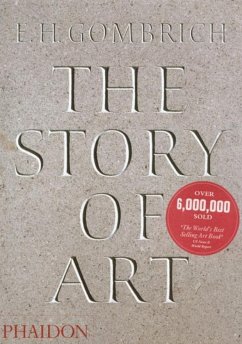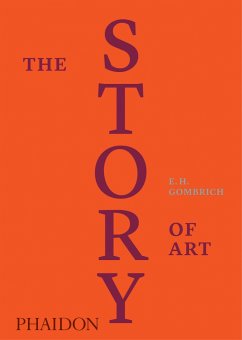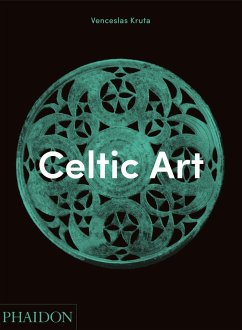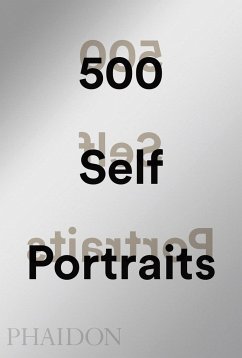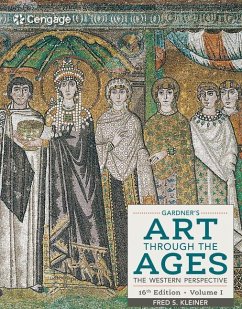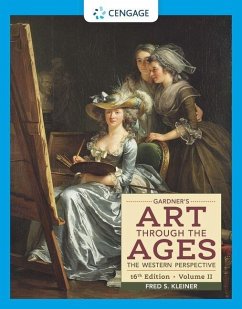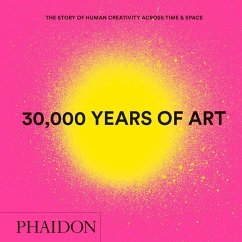Nicht lieferbar
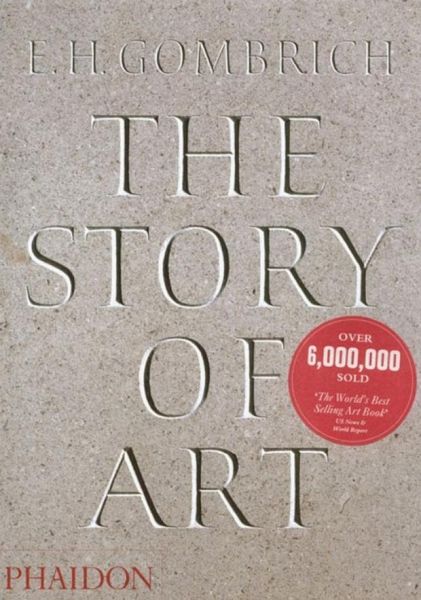
The Story of Art
Versandkostenfrei!
Nicht lieferbar
The Story of Art, one of the most famous and popular books on art ever written, has been a world bestseller for over four decades. Attracted by the simplicity and clarity of his writing, readers of all ages and backgrounds have found in Professor Gombrich a true master, and one who combines knowledge and wisdom with a unique gift for communicating his deep love of the subject. , one of the most famous and popular books on art ever written, has been a world bestseller for over four decades. Attracted by the simplicity and clarity of his writing, readers of all ages and backgrounds have found in...
The Story of Art, one of the most famous and popular books on art ever written, has been a world bestseller for over four decades. Attracted by the simplicity and clarity of his writing, readers of all ages and backgrounds have found in Professor Gombrich a true master, and one who combines knowledge and wisdom with a unique gift for communicating his deep love of the subject.
, one of the most famous and popular books on art ever written, has been a world bestseller for over four decades. Attracted by the simplicity and clarity of his writing, readers of all ages and backgrounds have found in Professor Gombrich a true master, and one who combines knowledge and wisdom with a unique gift for communicating his deep love of the subject.
For the first time in many years the book has been completely redesigned. The illustrations, now in colour throughout, have all been improved and reoriginated, and include six fold-outs. The text has been revised and updated where appropriate, and a number of significant new artists have been incorporated. The bibliographies have been expanded and updated, and the maps and charts redrawn.
The Story of Art has always been admired for two key qualities: it is a pleasure to read and a pleasure to handle. In these respects the new edition is true to its much-loved predecessors: the text runs as smoothly as ever and the improved illustrations are always on the page where the reader needs them. In its new edition, this classic work continues its triumphant progress tirelessly for yet another generation, to remain the title of first choice for any newcomer to art or the connoisseur.
has always been admired for two key qualities: it is a pleasure to read and a pleasure to handle. In these respects the new edition is true to its much-loved predecessors: the text runs as smoothly as ever and the improved illustrations are always on the page where the reader needs them. In its new edition, this classic work continues its triumphant progress tirelessly for yet another generation, to remain the title of first choice for any newcomer to art or the connoisseur.
, one of the most famous and popular books on art ever written, has been a world bestseller for over four decades. Attracted by the simplicity and clarity of his writing, readers of all ages and backgrounds have found in Professor Gombrich a true master, and one who combines knowledge and wisdom with a unique gift for communicating his deep love of the subject.
For the first time in many years the book has been completely redesigned. The illustrations, now in colour throughout, have all been improved and reoriginated, and include six fold-outs. The text has been revised and updated where appropriate, and a number of significant new artists have been incorporated. The bibliographies have been expanded and updated, and the maps and charts redrawn.
The Story of Art has always been admired for two key qualities: it is a pleasure to read and a pleasure to handle. In these respects the new edition is true to its much-loved predecessors: the text runs as smoothly as ever and the improved illustrations are always on the page where the reader needs them. In its new edition, this classic work continues its triumphant progress tirelessly for yet another generation, to remain the title of first choice for any newcomer to art or the connoisseur.
has always been admired for two key qualities: it is a pleasure to read and a pleasure to handle. In these respects the new edition is true to its much-loved predecessors: the text runs as smoothly as ever and the improved illustrations are always on the page where the reader needs them. In its new edition, this classic work continues its triumphant progress tirelessly for yet another generation, to remain the title of first choice for any newcomer to art or the connoisseur.






